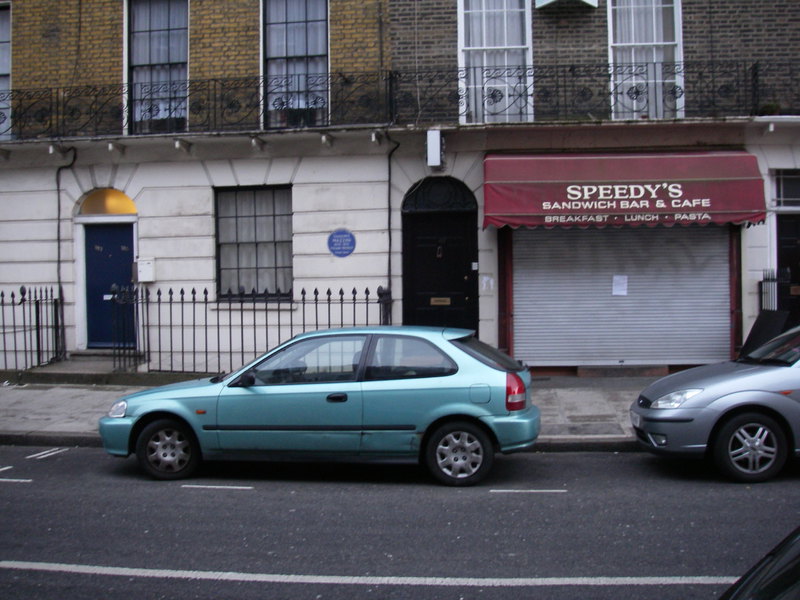Boomtime, the 34 day of Discord in the YOLD 3179
Bletchley Park & The National History of Computing Museum
I spent the Easter weekend in the UK with Biological Expirement #1 and #2.
We were mostly in London, visited British Musuem, went to the HMS Belfast and, of course, had some nice vegan meals. One restaurant in particular gets a mention: the wonderful south Indian Sagar. Not the best service but great food.
We had some incidents that might have turned rather difficult. I realized only two days before flying from Copenhagen that we might need passports! It turns out that, although a member of the European Union, the UK hasn't signed the Schengen Agreement allowing free travel. I didn't know. I was lucky that I checked. Imagine being sent back on a return flight!
I had to shell out to have three emergency passports made. Later, #2 forgot his bag in a restaurant with the passport in it! Luckily, we got the bag back.
However, what probably interests the readers of my blog more is that we also visited Bletchley Park, the home of the Government Code & Cypher School during World War II. Co-located within Bletchley Park is The National History of Computing Museum, also well worth a visit.
It was really easy to get to Bletchley Park. There are direct trains to Bletchley from London Euston. Not all trains stop at the Bletchley train station but you can also go to nearby Milton Keynes and go back by bus. From Bletchley station it's very easy to find your way to Bletchley Park.
This seems to be the right way:
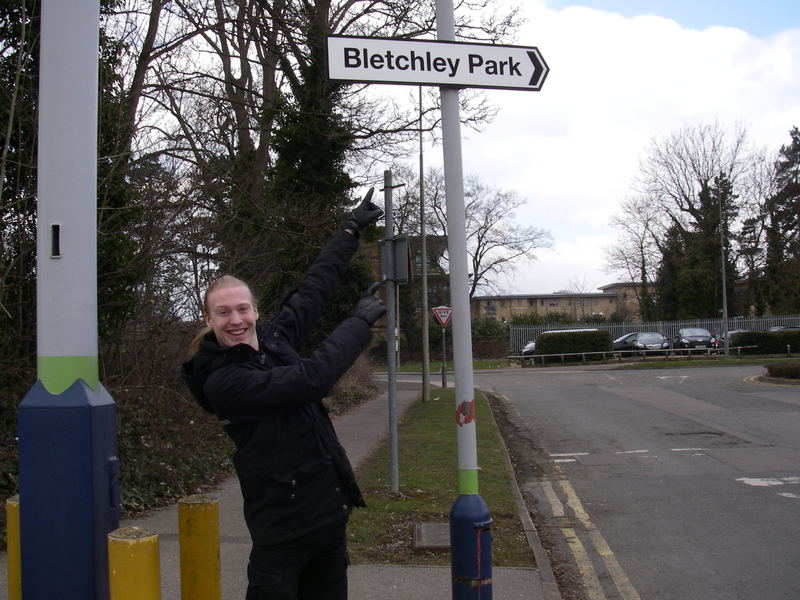
And here's the gate to the park:
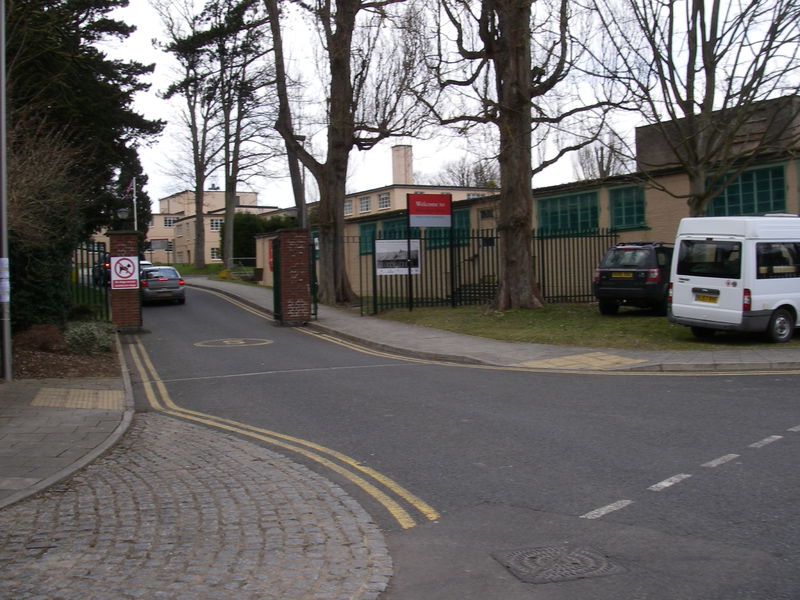
Bletchley Park was much bigger than I thought. During WWII ~9000 people worked here! In the literature I've read about an ugly mansion and some "huts", but it's seldom mentioned that these huts were later replaced by brick buildings several storeys high! The different departments kept their "hut" designation even after the move.
Bletchley Park is also a living place, what with the Bletchley Park Science and Innovation Centre occupying several of the huts and the upper floor of the mansion.
We took a tour around the premises. Highly recommended. We also got to see a working Bombe replica actually operating!
Here's Ludvig in front of the Bombe replica:

Then we were off to the real excitement: Colossus! Depending on the day you visit there will be a presentation of Colossus and it will actually be running.
Colossus during the presentation:
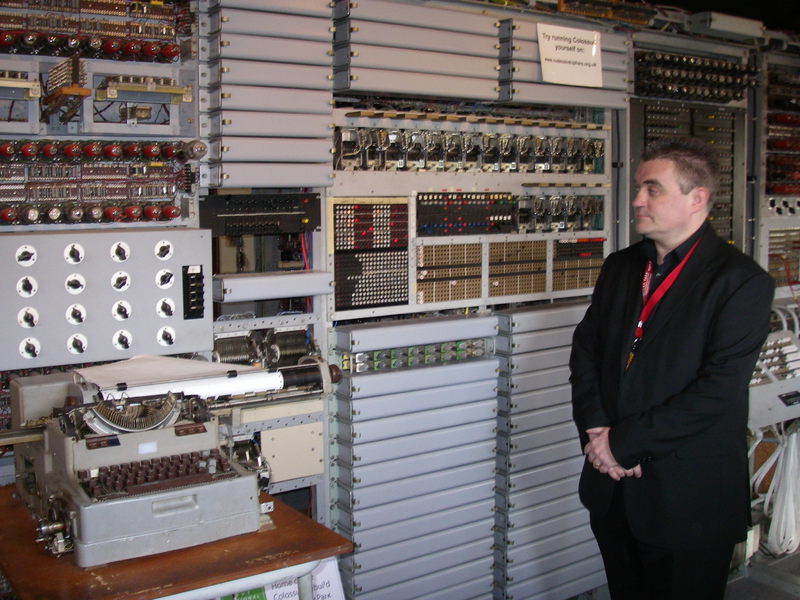
Inside Colossus:
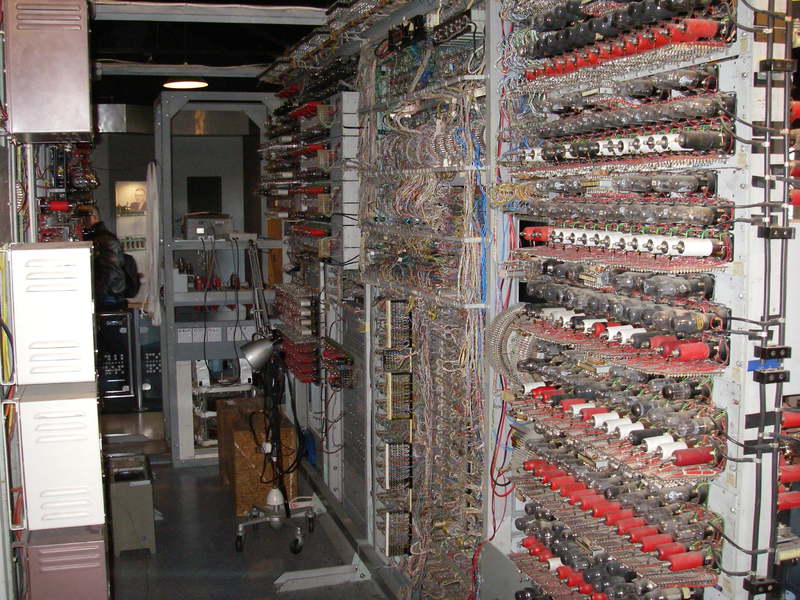
In early reports on the Colossus, it was explained that it was an early computer. After having read two books on the development of Colossus I'm not so sure I agree. For example, Colossus lacks conditional branching. Still, it's definitely a great step forward into using electronics.
The Colossus replica is shared with The National History of Computing Museum. If you want to see the entire collection, and not just the (Heath) Robinson replica and the Colossus, you will have to pay for an extra ticket, but it's well worth it!
There are guided tours on Tuesdays and Sundays but as we were there on a Saturday we missed that. It would have been nice to know a little more about where some of the computers had been used.
A lot of the machines were in running condition and some of them were turned on. One of the biggest was an entire ICL 2966 mainframe, complete with a huge disk farm! However, the most impressive was the 1951 vintage Harwell Dekatron, also known as WITCH, here with Ludvig:
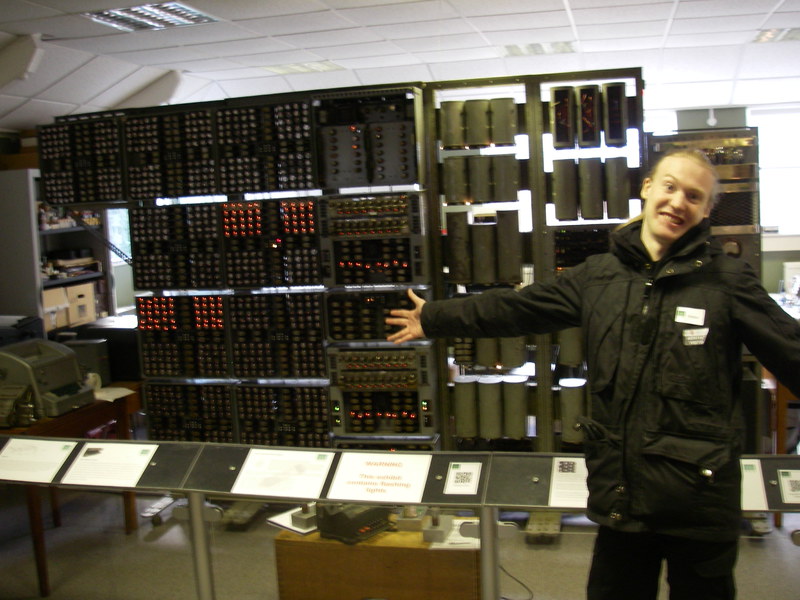
The work on the machines were mostly done by volunteers from the Computer Conservation Society, who also have a page about WITCH.
There was also a full 'classroom' of BBC Micros!
With the exception of the classroom full of BBC Micros with plenty of books and mostly BASIC programs there was very little software on display. They had a large poster describing programming language history, but not much in the form of hands-on experience. The software gallery on the TNMOC web pages is also mostly empty:
http://www.tnmoc.org/explore/software-gallery
but it seems they are working on it together with the CCS' software preservation project.
I tried to have a closer look at the Perq, an early windowed workstation, but the boys wanted to move on.
Here's a picture of the ICL/Three Rivers Perq and, surprisingly, a Norsk Data ND-100 Satellite:
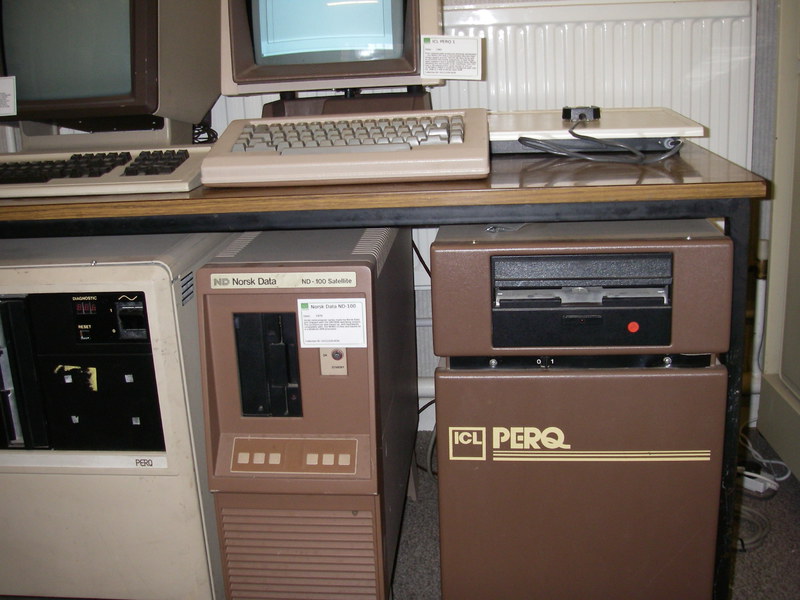
I was a bit surprised to note that TNMoC didn't have a PDP-10. Several PDP-11s were present and two of them were running, displaying radar reflections on two large radar screens (labelled "Ericsson"!). There was also at least one Prime, a 750, but it wasn't running and there was no information displayed about it. I had thought Prime computers were pretty common in the UK and expected more, perhaps even a possibility to play with PRIMOS.
Before leaving I bought three books from the Bletchley Park bookshop: Colossus: The Secrets of Bletchley Park's Codebreaking Computers by B. Jack Copeland et al, Paul Gannon's Colossus: Bletchley Park's Greatest Secret and Andrew Hodges' biography Alan Turing: The Enigma.
As I'm writing this I've read Paul Gannon's great book on the Colossus development and, really, a rather general history of telecommunications and the work at Bletchley Park and I'm halfway through the really good Turing biography. Highly recommended!
Statue of Turing at Bletchley Park:
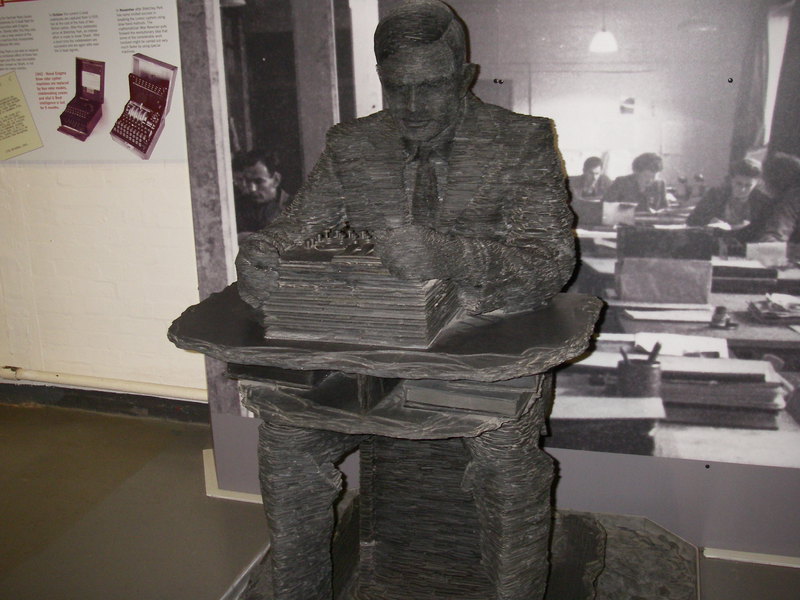
On our way back to the hotel from Euston station we happened to notice that we we're right beside where BBC's Sherlock placed 221B Baker Stret: 187 North Gower Street. I couldn't resist taking a photo, so I leave you with the photo of the mock Baker Street:
